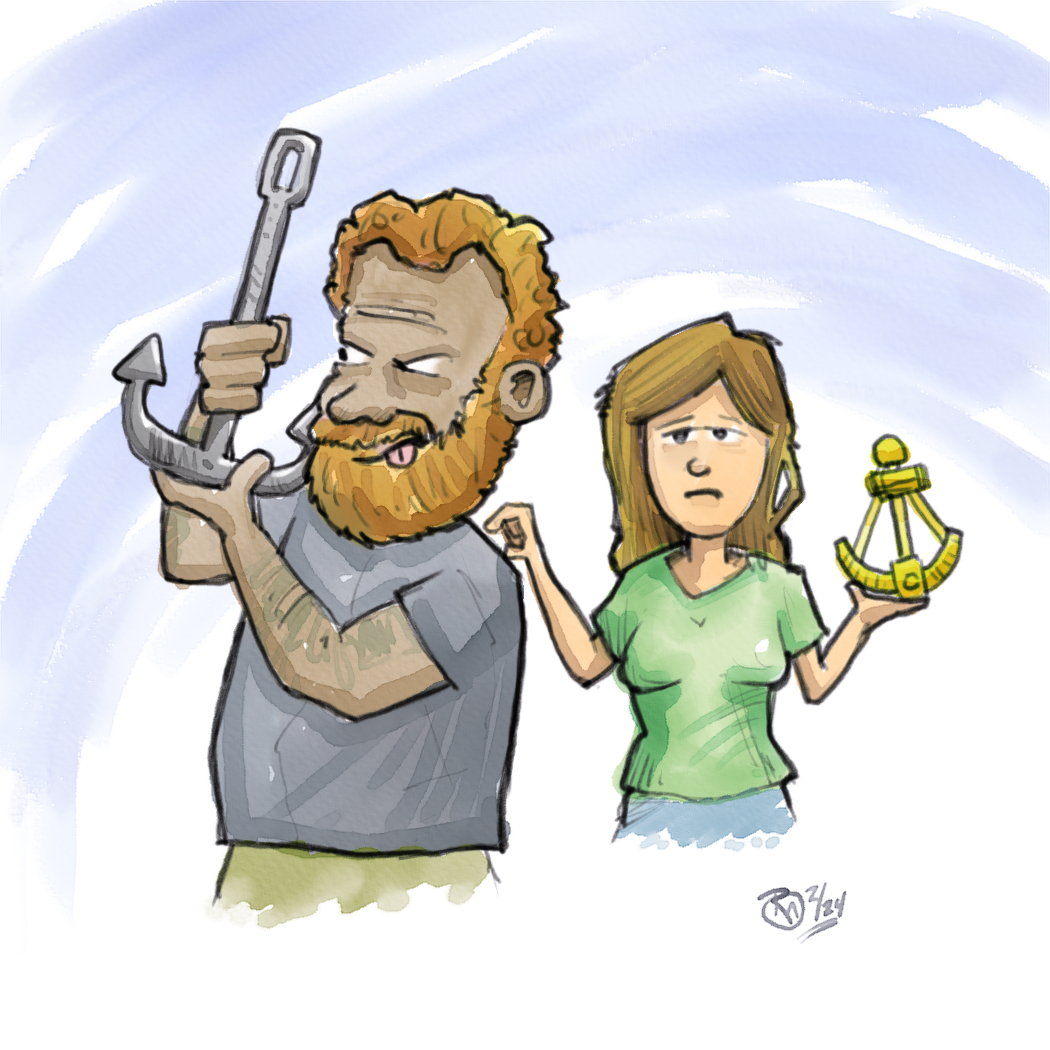
I spent the first few years living aboard based out of The Portofino Marina in Redondo Beach, California. And, about every other year, I would sail a bit further, once down to Puerto Vallarta on the mainland, and once all the way down to Zihuatanejo. Each time, I would fly home every three weeks for a week. At the time, I was publishing Biker Lifestyle Magazine, and they wanted me to be there occasionally, though I never did know why!
Soon it lost its appeal. I needed more to get my juices flowing. Hawaii! Twenty-six hundred nautical miles to paradise. That was what I needed!.
I spent a lot of time picking up all the charts, including the overall chart of the Pacific, which hung in my office with every path I had sailed well marked on it (until the fire a couple months ago that took it and everything else I owned).
And then there was navigating across an ocean. This was a major. I couldn’t afford a Sat-Nav or a weather-fax or a Single-Sideband radio. That stuff was well out of my budget. No, I was going to have to learn how to navigate using celestial navigation. That meant using a sextant! Now, let me tell you, my mind was not created for the sextant. I bought a decent sextant from Celestaire, as well as the books that went with it. I studied all the diagrams and math, I looked at all the reference tables, and I did all the things that mariners of the time did. But in the end, I could not figure out how to locate where I was standing on Earth without looking around me. And I knew that looking around when in mid-ocean would not help much.
My neighbor in the marina was an old salt named Bill Larson who lived on a 41’ square-rigged ketch. It was as salty as he was. In fact, he had added a square-sail on the top of his main mast. Many years later he would skipper the Lady Washington tall ship!
So, I asked him to teach me. We went down below on his boat and he started talking about angles and variation and deviation (I knew how to be a deviate!!) and all kinds of things — none of which I understood.
As the day to depart grew near, I was pretty worried. I still did not know how to figure my position using a sextant.
And then it happened. Being a prudent mariner (hah!), I decided I should have a back-up sextant. Just in case. Then, as now, whatever you have as a backup means the original will not break! So off to West Marine I went, and I bought a $25 (yes, that’s how much they were then!) plastic Davis sextant. It came in a neat little plastic case, with a neat little booklet about 15 pages long… telling you how to use it!
And I understood it immediately! There were two little paragraphs telling me how to take a noon site. That would be all I’d need. If I knew where I was each day at noon, I could navigate anywhere on Earth!
I gotta tell ya, it worked pretty well! On my first sail across the Pacific to Hawaii, I started taking noon-sites everyday and felt confident that I knew, at least sorta, where I was on this big blue ball we call Earth.
About halfway across, we saw the oil tanker BassPike. She crossed our path about four miles in front of us, and I radioed her, asking if they could give me a current position, just to verify what I had calculated.
Wanna guess how close I was in my calculations?
Not very. In fact, they told me I was “a few hundred miles” off my charted position.
This was NOT good news. First, I had to figure out exactly where we were on the planet. Then the hard part: figuring out where I had gone wrong.
Oh, yeah, and I had to do this without letting my crew know how lost I had gotten them. At least until I figured it out.
For the next two days, I calculated and re-calculated. On the third day, I found my problem. I’d started taking noon sites sailing down the coast of the US while sailing to Cabo San Lucas. During that part of our voyage, I had been adding the declination (a fancy word for the magic formula to figure out where you are). I now realized that during the three weeks we’d sat in Cabo, the formula had changed, and I was supposed to have been deducting the declination.
So, each day when I plotted my course across this huge ocean, I’d been adding distance instead of subtracting it. So, each day my mistake was compounded, and our calculated position started jumping way ahead of our actual position.
Oh, as a prudent mariner, I always backed up my position on the chart with a dead-reckoning position as well, but as it was dropping so far behind, I had figured we had a current pushing us, or maybe a fast moving whale was pushing us. I didn’t know, I just knew we were kickin’ butt as we raced to Hawaii, so I was a happy captain — until I realized my dead-reckoning was almost spot on our true speed, and I’d been living in a fool’s paradise.
I did eventually get it figured out. When we finally arrived at Radio Bay in Hilo, Hawaii, I was just three miles off using my sextant. That was a good feeling.
Of course, I do now enjoy the benefits of a GPS. When I was using sextant, I learned that if you couldn’t see the sun, you didn’t know where you were. After a two-week period sailing back to the mainland from Hawaii while overcast, well, let’s just say our new technology is a good thing!
But I still always keep a dead-reckoning position as a backup!
Enjoy the ride!



